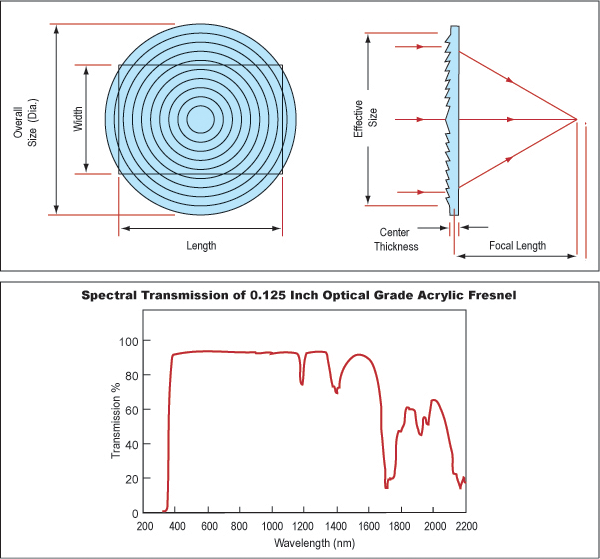무엇을 도와드릴까요?

프레넬 렌즈는 얇고 가벼운 플라스틱 시트 표면에 기존 렌즈의 곡면이 아닌 일련의 동심홈이 몰딩된 제품입니다. 이러한 홈(groove)은 소형 프리즘과 같은 단면을 가지고 있어 각각 굴절면처럼 작용하여, 평행광을 공통의 초점 길이에 아주 근접하게 굴곡시킵니다. 렌즈의 구조가 매우 얇기 때문에 흡수로 인한 광손실이 매우 미미합니다. 프레넬 렌즈는 효율성과 이미지의 품질을 절충한 광학 부품입니다. 홈(groove)의 밀도가 높으면 고품질의 이미지를 제공하는 반면, 밀도가 낮으면 더 나은 효율성을 제공합니다(집광 용도에 적합). Infinite conjugate 시스템에서는 렌즈의 홈이 있는 면이 conjugate가 더 긴 쪽을 향해야 합니다.
프레넬 렌즈는 콘덴서 시스템이나 방출기/감지기 셋업과 같은 집광 용도에 주로 사용됩니다. 이 밖에도 확대경 혹은 투영 렌즈처럼 쓰이기도 하지만 왜곡 수치가 높아 사용을 권장하지는 않습니다.

본사 및 지사별 연락처 확인하기
견적 요청 도구
재고 번호 입력 필요
Copyright 2023, 에드몬드옵틱스코리아 사업자 등록번호: 110-81-74657 | 대표이사: 앙텍하우 | 통신판매업 신고번호: 제 2022-서울마포-0965호, 서울특별시 마포구 월드컵북로 21, 7층 (서교동, 풍성빌딩)
The FUTURE Depends On Optics®